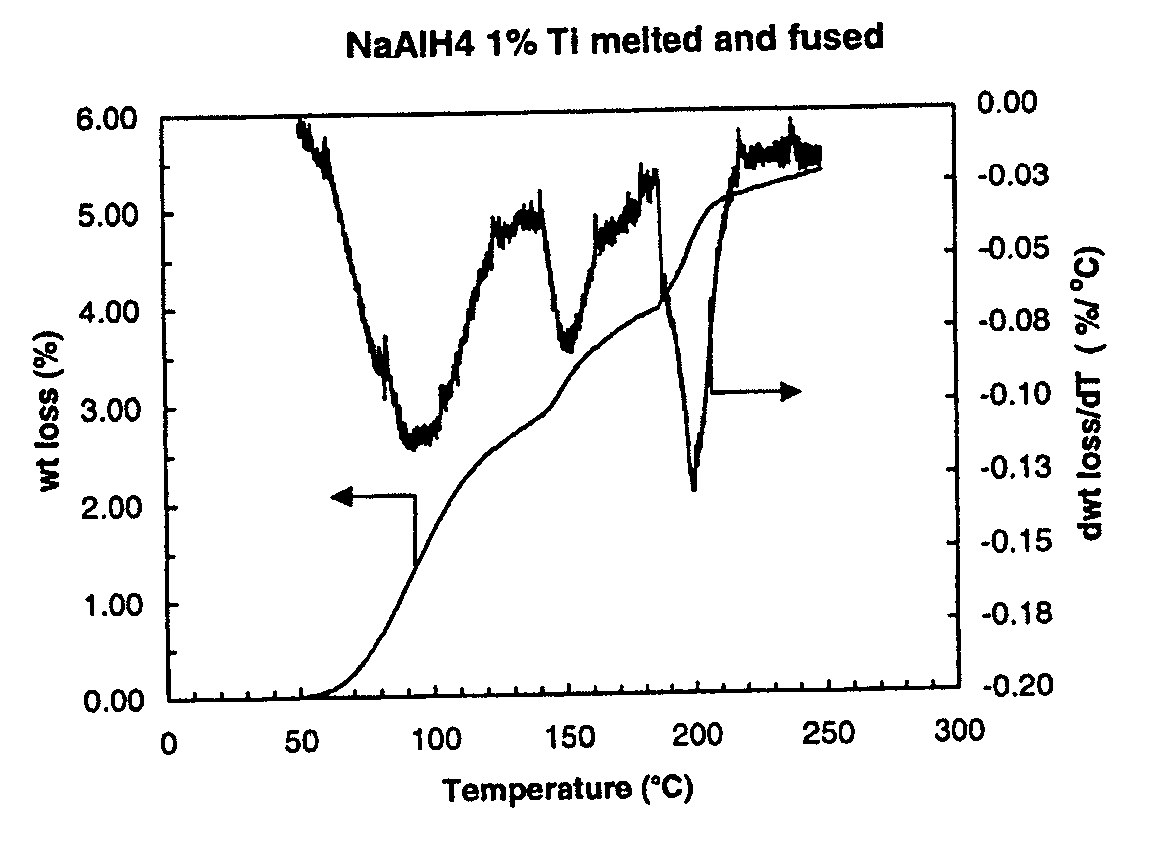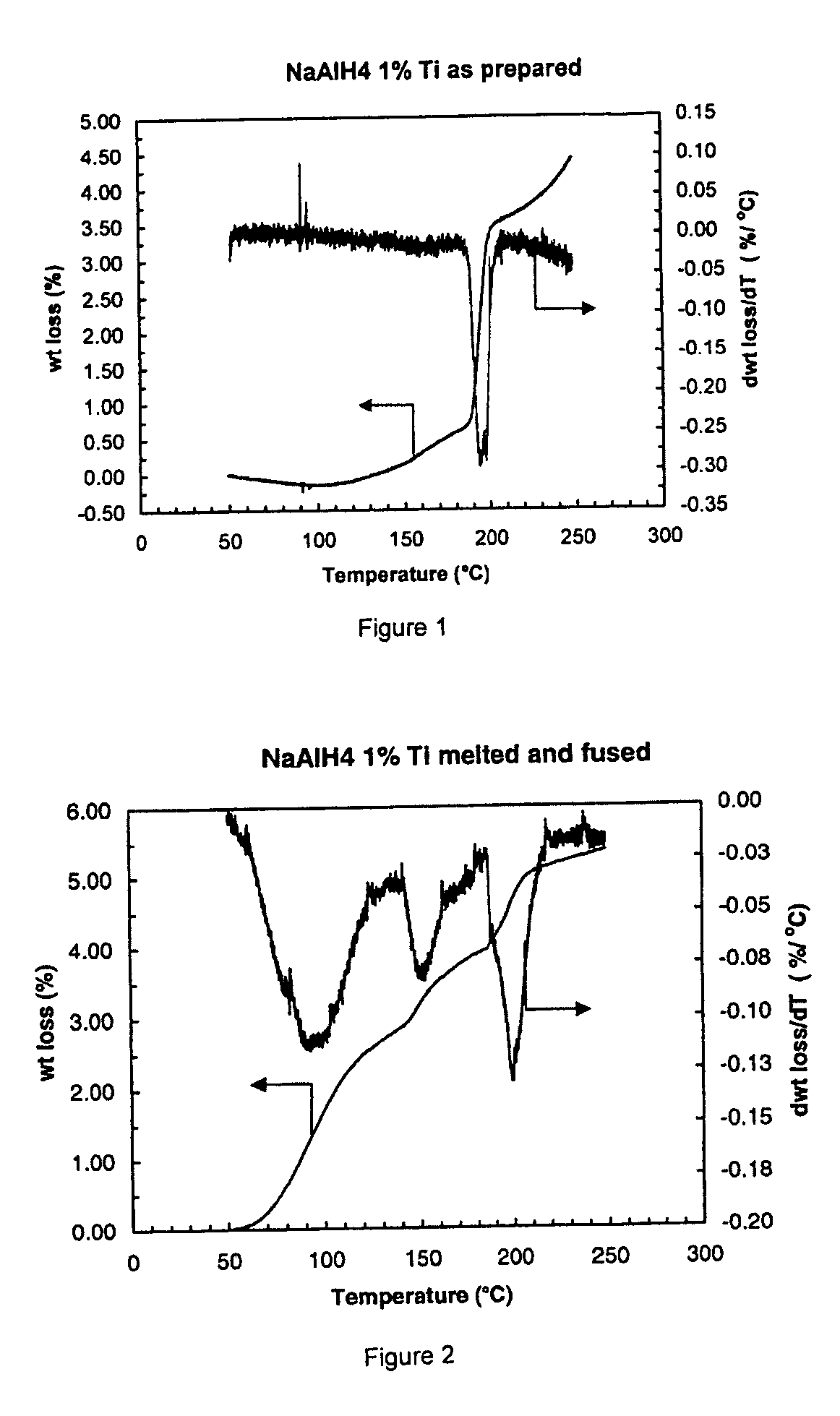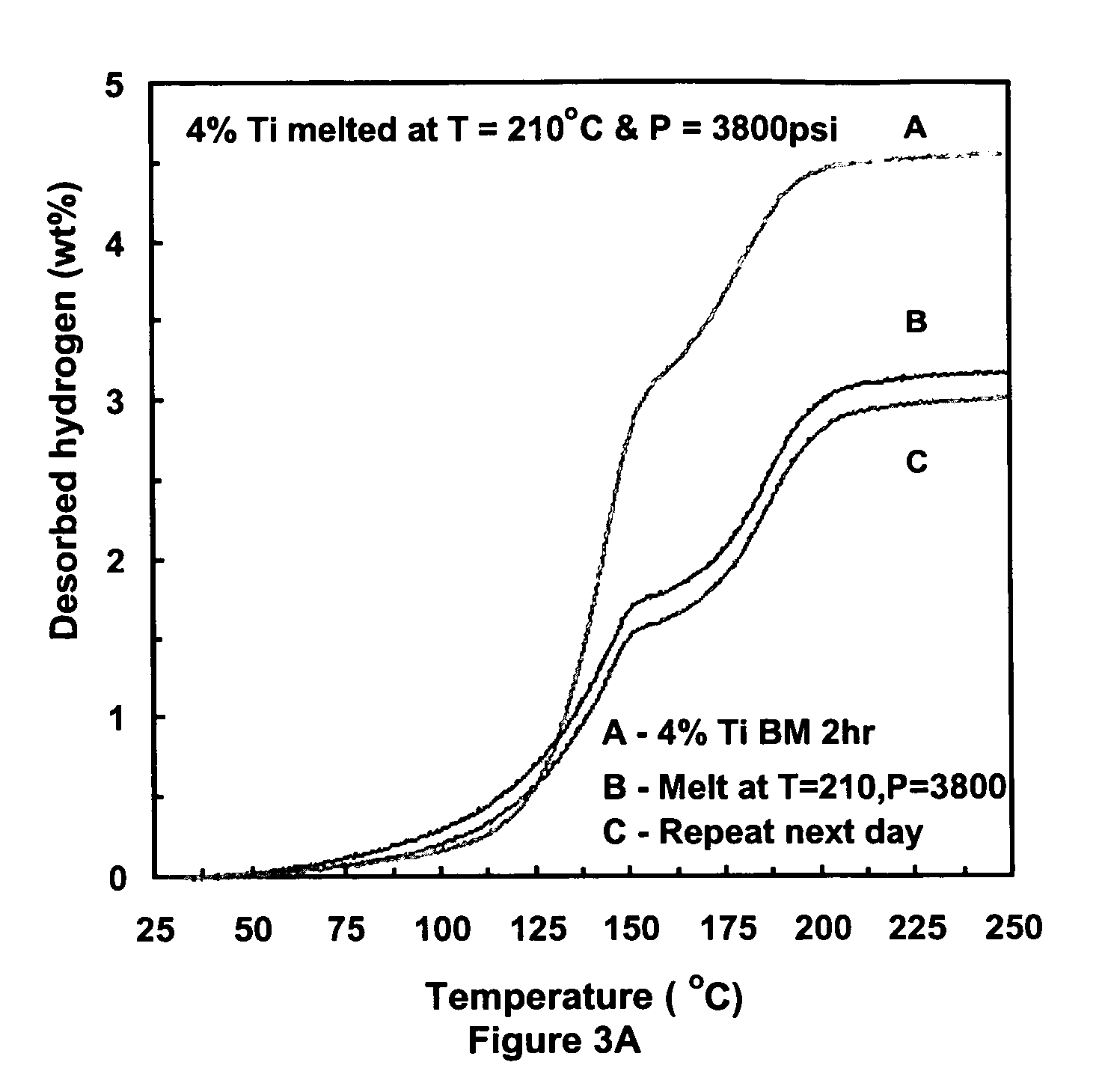Complex hydrides for hydrogen storage
- Summary
- Abstract
- Description
- Claims
- Application Information
AI Technical Summary
Benefits of technology
Problems solved by technology
Method used
Image
Examples
example 1
[0028]One example of a fused hydrogen storage product is provided by the reaction product of one gram of sodium aluminum hydride mixed with 1 to 2 milliliters of 100 mM titanium butoxide in tetrahydrofuran (THF), the volume of titanium butoxide adjusted to achieve a 1 percent by weight target amount of titanium. The two components were mixed and stirred under an inert atmosphere in a glovebox using an agate mortar and pestle until the sample was dried.
[0029]The dried sample is placed in a pressure bomb and sealed prior to removal from the glovebox. Outside the glovebox, the bomb is connected to a hydrogen supply line and a separate vacuum line in a “T” configuration. Hydrogen is cycled through the lines to purge air prior to pressurization of the pressure bomb. Following purging, the pressure bomb is opened for pressurization with hydrogen gas to a pressure of about 3700 psi (260 atmosphere). The pressure bomb is then sealed at the elevated pressure and disconnected from the hydroge...
example 2
[0032]One gram samples of NaAlH4 doped with 4% TiCl3 were subjected to high intensity ball milling for 2 hours. Following ball milling, the metal hydride was fused by exposure to a temperature of 210° C. and a pressure of 3800 psi using hydrogen gas for about 4 hours. At the end of 4 hours, the temperature and pressures were allowed to gradually equilibrate to standard conditions.
[0033]Thermogravimetric analysis (TGA) was performed on control samples (ball milled only) and fused samples which were additionally subjected to the combination of hydrogen pressure and elevated temperature. As seen in reference to FIG. 3A, fused (melt) demonstrate improved low temperature kinetics of the fused samples as opposed to samples obtained by ball milling. The second curve in FIG. 3A is a second temperature program desorption run repeated 24 hours later for the fused product. The kinetics and capacity of the 24 hour delayed run reflects hydrogen desorption from hydrogen which was absorbed overnig...
example 3
[0036]One gram mixtures of a 1:1:1 mole mixture of NaH LiH and NaAlH4 were prepared by a melt preparation process at a temperature of about 210° C. and with a hydrogen pressure of 3800 psi for 4 hours. Prior to the melting process, samples were dry mixed using a mortar and pestle. A sample of the mixture processed only with the mortar and pestle was used as a control sample.
[0037]Following the melt preparation process, x-ray detraction patterns were obtained of control samples and the fused / melted samples. Set forth in FIG. 4A is the x-ray defraction pattern of control sample as mixed with only a mortar and pestle. As seen in FIG. 4A, the beginning constituents are identified along with the stainless steel holder “S” and a transparent tape covering “T” placed over the holder.
[0038]FIG. 4B sets forth the x-ray defraction patterns of the fused product. As indicated in FIG. 4B, appreciable concentrations of Na2LiAlH6 and Na3AlH6 were formed. The data also indicates that portions of the...
PUM
 Login to View More
Login to View More Abstract
Description
Claims
Application Information
 Login to View More
Login to View More - R&D
- Intellectual Property
- Life Sciences
- Materials
- Tech Scout
- Unparalleled Data Quality
- Higher Quality Content
- 60% Fewer Hallucinations
Browse by: Latest US Patents, China's latest patents, Technical Efficacy Thesaurus, Application Domain, Technology Topic, Popular Technical Reports.
© 2025 PatSnap. All rights reserved.Legal|Privacy policy|Modern Slavery Act Transparency Statement|Sitemap|About US| Contact US: help@patsnap.com



